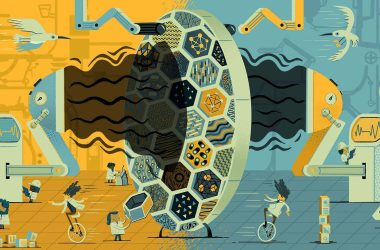Protons contain three quarks that are glued together by particles called gluons
Sefa Kart/Alamy
The size of a proton, a fundamental building block of matter, is not fixed and varies depending on how it is observed. If its charge is being measured, it has one radius, but if its mass is being observed, a smaller radius is observed because the mass is concentrated at the center.
Scientists at Argonne National Laboratory in Illinois, led by Zein-Eddine Meziani, have gained new insights into the size and internal structure of protons by studying their gluons. Gluons are particles that bind the quarks within protons together and account for most of their mass.
Using a particle called a J/psi meson, which interacts with gluons that have color charge (a property associated with the strong nuclear force), the researchers fired photons at liquid hydrogen, which consists mainly of protons. The collisions produced J/psi mesons, which allowed the team to calculate the distribution of mass within the proton.
The results suggested that gluons are concentrated in a dense core at the center of the proton, while the charge from the quarks extends to a larger radius. These findings were compared with predictions from another model of the proton, showing some agreement and some divergence. This indicates the need for further experiments to validate and refine the understanding of the proton’s structure.
The discovery of a variable proton size and internal structure has implications for calculations of other proton properties, such as spin, angular momentum, and energy distribution. However, these findings are based on models that may require further refinement.
Meziani and his team’s results build upon previous research that revealed the possibility of a heavier charm quark within protons, in addition to the three regular quarks. The presence of a charm quark may also affect the proton’s size and mass distribution.












